| |
|
| |
STATE OF THE NATION ADDRESS 2015 |
|
| |
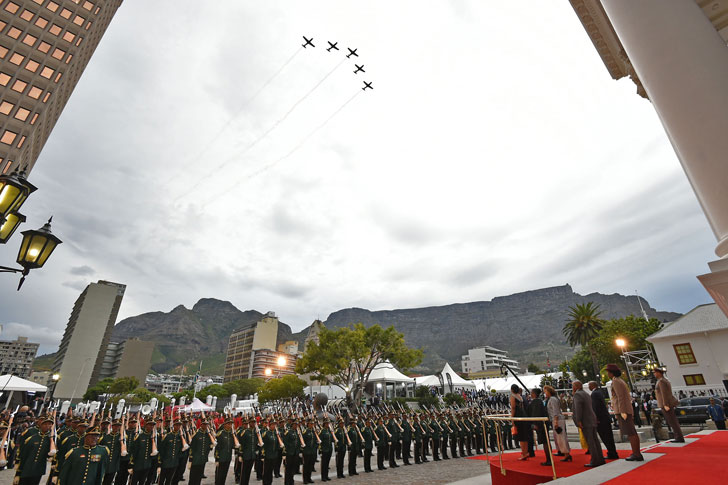 |
| |
PRESIDENT ZUMA SETS A NEW AGENDA |
| |
 |
|
The speech, which came as South Africa enters the third decade of freedom and in an era of the National Development Plan (NDP), addressed a wide range of issues, including the economy, energy constraints and job creation. |
|
|
|
President Jacob Zuma delivered the State of the Nation Address on 13 February, declaring that, while there were challenges, South Africa was on solid footing.
He delivered the address during the joint sitting of Parliament and listed not only the good progress South Africa had made in the past few years of his presidency, but also outlined government’s plans to keep the country moving in the right direction.
The address came amid growing concerns over Eskom’s challenges to keep up with the demand for energy and against a backdrop of sluggish economic growth and high levels of unemployment. In his speech, President Zuma listed numerous actions the Government was embarking on to address some of the challenges, including a nine-point plan to ignite growth and create jobs.
The plan will include:
- resolving the energy challenge
- revitalising agriculture and the agroprocessing value chain
- advancing beneficiation or adding value to our mineral wealth
- more effective implementation of a higher impact Industrial Policy Action Plan
- encouraging private-sector investment
- moderating workplace conflict
- unlocking the potential of small, medium and micro-enterprises, cooperatives, township and rural enterprises
- state reform and boosting the role of state-owned companies, information and communications technology infrastructure or broadband roll out, water, sanitation and transport infrastructure
- Operation Phakisa aimed at growing the ocean economy and other sectors.
Energy problems receiving attention
The country’s energy challenges will be tackled through a plan which involves short-, medium- and long-term responses. The short- and medium-term plan involves improved maintenance of Eskom's power stations, enhancing the electricity generation capacity and managing the electricity demand.
The long-term plan involves finalising the energy security master plan.
Government has committed to stabilise Eskom’s finances to enable the utility to manage the current period. It will provide Eskom with R23 billion in the next fiscal year to ensure greater energy security.
Government reaffirmed that the "War Room" established by Cabinet in December 2014 was working around the clock with Eskom to stabilise the electricity supply system and contain the load shedding.
To date, government has procured 4 000 MW from independent power producers, using renewable sources. A total of 3900 MW of renewable energy has also been sourced, with 32 projects with a capacity of just over 1 500 MW completed and connected to the grid.
A total of 2 600 MW of hydro-electric capacity will be sourced from the Southern African Development Community region.
The country’s long-term energy master plan will see gas, petroleum, nuclear, hydropower and other energy sources being used as part of the energy mix.
The Operation Phakisa Ocean Economy initiative, launched in 2014, also promises to unveil more oil and gas resources, which will be a game changer for our country and region.
Government is exploring the procurement of the 9 600 MW Nuclear Build Programme as approved in the Integrated Resource Plan 2010 – 2030. The target is to connect the first unit to the grid by 2023.
The Grand Inga Hydro-electrical Project partnership with the Democratic Republic of Congo will generate over 48 000 MW of clean hydro-electricity. South Africa will have access to over 15 000MW.
Government is committed to providing electricity to 3,4 million households in the country without electricity.
Infrastructure to stimulate growth
The President highlighted some of the infrastructure programmes that the Government had been embarking on to stimulate economic growth.
He said the National Infrastructure Development Programme continued to be a key job driver and catalyst for economic growth.
In 2012, President Zuma announced that South Africa would spend R4 trillion on infrastructure over 15 years, as part of a broad plan to boost economic development and growth. The spending would focus on building rail, road and economic links in five regions in the country and building new universities and refurbishing hospitals.
He highlighted, among others, several infrastructure projects that he said would unlock the economic potential of various sectors, including oceans, mining and agriculture.
Operation Phakisa, a results-driven approach, introduced last year, would aim at unlocking opportunities in the shipping, fisheries, aquaculture, mining, oil and gas, biotechnology and tourism sectors.
“We have committed R9,2 billion investment in gas and oil exploration in the port of Saldanha as part of the Operation Phakisa initiative. Operation Phakisa on Scaling Up the Ideal Clinic Initiative is aimed at promoting efficiency, effectiveness and professionalism in clinics,” said President Zuma.
Water infrastructure
President Zuma said several water infrastructure projects had been delivered and these would provide water for industrial and household use – and most of these were in the implementation or planning phases around the country.
Major projects include Umzimvubu Water Project in the Eastern Cape, Jozini Dam in Umkhanyakude in KwaZulu-Natal and projects in Bushbuckridge in Mpumalanga and phase one of the Mokolo Crocodile Water Augmentation in Limpopo.
Progress was being made to improve the water supply to areas that had been affected by shortages, such as Makana District Municipality in the Eastern Cape, Ngaka Modiri Molema District Municipality in North West and Giyani in Limpopo where we celebrated the delivery of water to 55 villages in October last year.
President Zuma further noted that the infrastructure programme continued to expand transport networks and improve roads which augurs well for economic growth.
“The Department of Transport will spend about R9 billion on the Provincial Roads Maintenance Grant or the Sihamba Sonke Programme and R11 billion on upgrading and maintaining roads which are not tolled.
“Over R6 billion will be spent in 13 cities on planning, building and operating integrated public transport networks during this financial year. We will also continue to improve the infrastructure in schools and higher education institutions to create a conducive environment for learning and teaching.”
Through the Accelerated School Infrastructure Delivery Initiative, which is part of the national infrastructure plan, 92 new schools have been completed to date and 108 are under construction.
About 342 schools have received water for the first time.
Fight against corruption
The President highlighted some of the steps that were being taken to fight corruption.
He said government had in place seven anti-corruption institutions and 17 pieces of legislation which were intended to combat corruption.
“This demonstrates a concerted effort by government to break the back of this scourge in the country.”
In the 2013/14 financial year, 52 persons were convicted in cases involving more than R5 million.
Thirty-one public servants were convicted in the first quarter of 2014/15 and freezing orders to the value of R430 million were obtained. “To prevent corruption and promote ethical governance, in December I signed into law the Public Administration and Management Act which, among others, prohibits public servants from doing business with the State,” said President Zuma.
As in previous years, the speech listed suggestions and inputs from South African citizens who highlighted particular issues ranging from crime, access to education, water, electricity and support for small business.
Those who wrote to the President did so via social networking platforms and thousands of suggestions and inputs were received.
– Source: www.SAnews.gov.za |
| |
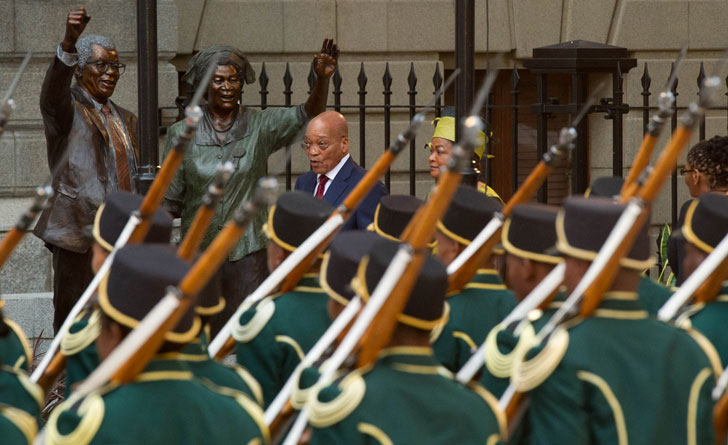 |
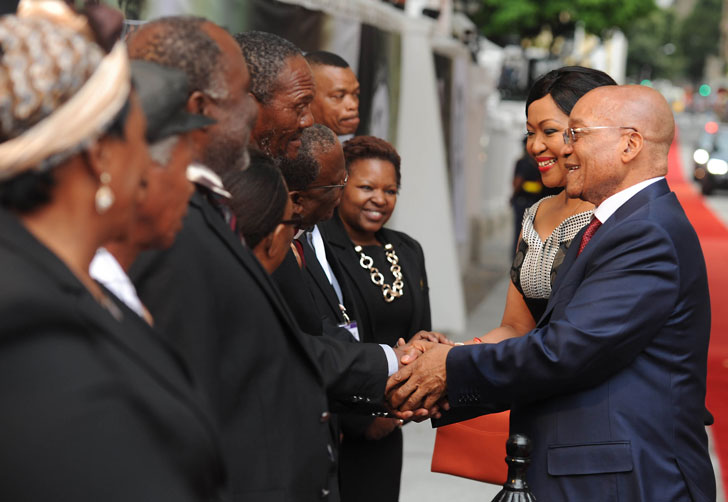 |
 |
|
| |
|
| |
| PRESIDENT ZUMA ON INTERNATIONAL RELATIONS |
| |
| “To contribute to building a better Africa, South Africa continued to support peace and security and regional economic integration in the continent.” – President Jacob Zuma |
| |
President Zuma said that a number of key outcomes had resulted from South Africa’s continued efforts to support peace, security and regional integration on the African continent.
“The African Capacity for Immediate Response to Crises, of which South Africa is a contributing and founding member, has been operationalised.
“The South African National Defence Force and South African Police Service continued to participate diligently in the conflict prevention and peacekeeping in the continent.
“South Africa also continued to support conflict resolution initiatives in Lesotho, Sri Lanka and South Sudan, led by the Deputy President.
“Economic cooperation with our BRICS partners was strengthened when the first two intergovernmental agreements were concluded on the occasion of the sixth BRICS Summit.
“These were the Agreement on the New Development Bank and the Treaty Establishing a Contingent Reserve Arrangement.
“Countries of the developed North remain important strategic partners for South Africa through which the country is able to advance its national and foreign policy. We have a valuable partnership with the European Union in, among others, the Infrastructure Investment Programme for South Africa valued at approximately R1,5 billion.
“The renewal of the African Growth and Opportunity Act beyond September 2015 and a pledge to support African-led peace initiatives on the continent are among the significant outcomes of the United States-Africa Leadership Summit held in the US last year.
President Zuma said that at a multilateral level, 2015 marked the 70th anniversary of the United Nations (UN), which brought into sharp focus the need to transform the UN Security Council and other international institutions. |
|
| |
|
| |
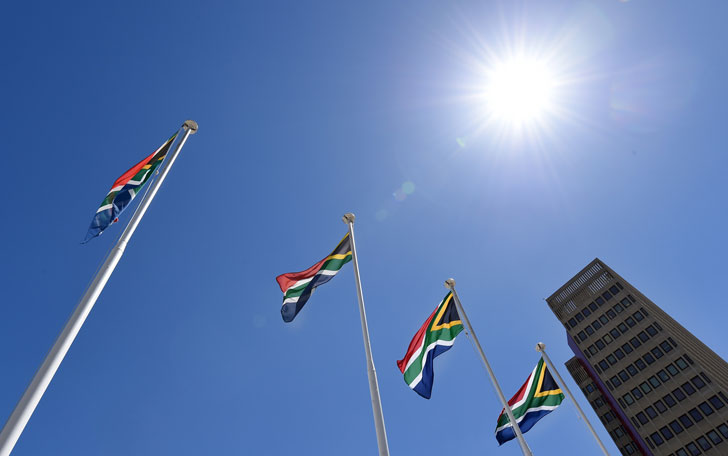 |
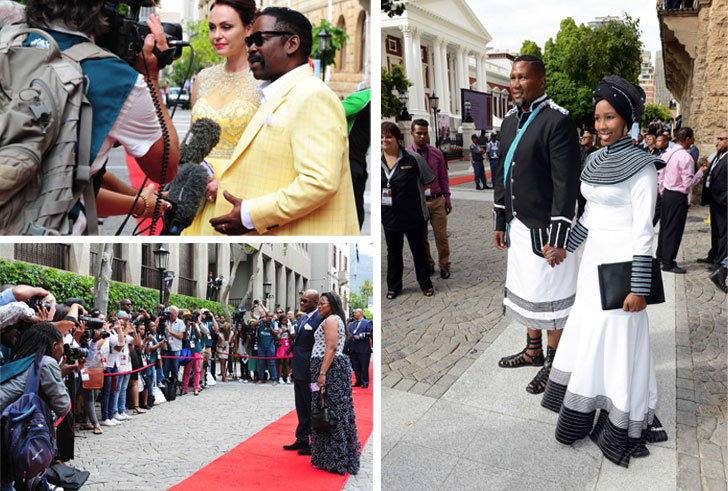 |
| |
|
| |
| SONA IN NUMBERS |
| |
- 60 – years since South Africans from all walks of life adopted the Freedom Charter in 1955, in Kliptown, Soweto
- 25 – years since the release of President Nelson Mandela from prison and since the unbanning of liberation movements
- 3,5% – the gross domestic growth forecasts for global economic growth in 2015
- 5% – the planned growth target to be achieved by 2019
- 15,3 million – people currently employed in South Africa for the last quarter of 2014
- R2 billion – amount claimed to date by employers from the Employment Tax Incentive
- 29 000 – employers who have claimed from the Employment Tax Incentive
- 270 000 – number of young people that employers claimed for from the Employment Tax Incentive
- 30 000 – work opportunities created by environmental programmes such as Working on Waste, Working for Wetlands, Working for Water and Working on Fire
- 60 000 – work opportunities to be created by environmental programmes such as Working on Waste, Working for Wetlands, Working for Water and Working on Fire during the next financial year
- R23 billion – to be given to Eskom by government in the next fiscal year
- 3 – the new power stations Kusile, Medupi and Ingula
- 10 000 – megawatts of capacity to be added to the national grid by Kusile, Medupi and Ingula power stations
- 4 000 – megawatts procured by government from independent power producers, using renewable sources
- R140 billion – money from private investors following the first three bid windows of the renewable energy procurement process
- 3 900 – megawatts of renewable energy that has been sourced
- 32 – number of renewable energy projects completed
- 1 500 – megawatts connected to the grid
- 100 – megawatts being delivered to the grid by Eskom’s Sere Wind Farm
- 2 400 – megawatts of new coal-fired power generation capacity procured by government from independent power producers
- 2 400 – megawatts of new gas-fired power generation to commence in the first quarter
- 2 600 – megawatts of hydro-electric capacity to be sourced from the Southern African Development Community region
- 48 000 – megawatts of clean hydro-electricity to be generated from the Grand Inga Hydro-electrical Project, in partnership with the Democratic Republic of Congo (DRC)
- 15 000 – megawatts that South Africa will access from the hydro-electricity partnership with the DRC
- 50 – farming enterprises to be identified for the 50/50 policy framework, which proposes relative rights for people who live and work on farms
- 12 000 – maximum of hectares to be set as a ceiling of land ownership in terms of the 50/50 policy framework
- 90 000 – hectares of land allocated to smallholder farmers, farm dwellers and labour tenants through the Land Reform Programme
- 27 – the poorest district municipalities to receive agri-parks or cooperatives and clusters this year to transform rural economies
- R2 billion – initial funding made available for the Agri-Park initiative
- R500 million – projected to be generated in foreign exchange over three years from the export of apples alone
- 300 – farmers in the Nwanedi Cluster in the Vhembe District Municipality in Musina, who are receiving support from the Limpopo Provincial Government to grow vegetables
- 1 300 – hectares used for commercial purposes in the Nwanedi Cluster in the Vhembe District Municipality in Musina to grow vegetables
- 2 500 – jobs created by vegetable farmers in the Nwanedi Cluster in the Vhembe District Municipality in Musina
- R24,5 billion – a private-sector investment in the Automotive Investment Scheme
- R103 billion – value of exports from automotives and components in 2013
- 152 – number of countries that South Africa’s world-class auto sector exports to
- 60 million – the pairs of shoes that the South African leather and footwear sector produces
- 18% – growth in the export of shoes
- R88 billion – South Africa’s doubled foreign direct investment inflows in 2013, according to the United Nations Conference on Trade and Development
- R2,8 billion – committed by government to companies in the manufacturing sector, through the Manufacturing Competitiveness Enhancement Programme
- R12,4 billion – committed by manufacturers in private-sector investment
- R2,1 billion – ring-fenced to revitalise distressed mining towns
- R290 million – approved for Informal Settlement Upgrading in Mpumalanga, North West, Gauteng, Northern Cape, Limpopo and the Free State
- 133 – informal settlements being assessed or prepared for upgrading through the National Upgrade Support Programme
- 32 – settlements being upgraded through the National Upgrade Support Programme
- 87 – housing projects being implemented across the prioritised mining towns
- 30% – appropriate categories of state procurement for purchasing from small, medium and micro-enterprises, cooperatives as well as township and rural enterprises
- R25 million – amount disbursed by the National Youth Development Agency to youth-owned micro-enterprises in the last financial year nationally
- 765 – youth-owned micro-enterprises that received funding from the National Youth Development Agency in the last financial year nationally
- 2,7 billion – value of fund for young people supported by the National Youth Development Agency in partnership with the Industrial Development Corporation and the Small Enterprise Finance Agency
- 8 – offices in district municipalities to be connected by government this year to mark the beginning of the first phase of broadband roll-out
- 90 – number of days of the turnaround strategy to stabilise the finances of South African Airways
- 55 – villages in Limpopo, Eastern Cape and North West that benefited from the delivery of water in October 2014
- 15 000 – artisans or plumbers to be trained through the Department of Water and Sanitation to fix leaking taps in their local communities
- R9 billion – to be spent by the Department of Transport on the Provincial Roads Maintenance Grant or the Sihamba Sonke Programme
- R11 billion – for the upgrading and maintenance of roads that are not tolled
- R6 billion – to be spent in 13 cities on planning, building and operating integrated public transport networks during this financial year
- 92 – schools that have been completed through the Accelerated School Infrastructure Delivery Initiative
- 108 – schools under construction through the Accelerated School Infrastructure Delivery Initiative
- 342 – schools that have received water for the first time
- 351 – schools that have received decent sanitation
- 288 – schools that have been connected to electricity
- 16 – sites government has identified for the construction of 12 new Technical and Vocational Education and Training College campuses and the refurbishment of two existing campuses
- 50 000 – houses delivered in the subsidy and affordable housing segments by 30 September 2014
- 5 000 – houses for military veterans to be provided by government
- R9,2 billion – investment committed in gas and oil exploration in the port of Saldanha as part of the Operation Phakisa initiative
- 659 – life sentences secured by the South African Police Service’s Family Violence, Child Protection and Sexual Offences Investigation Unit against perpetrators of crimes against women and children
- 13 575 – public order incidents successfully brought under control by the police
- 1 907 – unrest-related incidents successfully brought under control by the police
- 11 668 – peaceful incidents successfully brought under control by the police
- 7 – anti-corruption institutions in place to combat corruption
- 17 – pieces of legislation intended to combat corruption
- 52 – persons convicted in corruption cases involving more than R5 million in the 2013/14 financial year
- 31 – corrupt public servants convicted in the first quarter of 2014/15
- R430 million – value of freezing orders obtained
- R1,5 billion – value of the Infrastructure Investment Programme for South Africa, in partnership with the European Union.
– Source: Department of Communications
|
|
| |
|
| |
| A SONA FIRST |
| |
| This year’s State of the Nation Address (SONA) for the first time saw a female praise singer. |
| |
 |
| |
The praise singer, Kgato Welminah Masemola, was born on 22 February 1940 at the Ga-Marishane village as a daughter of the late Headman of the late Kgoshi Tseke Marishane, the father to the late Kgoshi Hlabirwa MM Marishane of Ga-Marishane village in Limpopo.
Presently, the Ga-Marishane Chieftainship is under the late Chief’s wife – Kgoshigadi Mogoshadi Marishane. In addition to travelling with Kgoshigadi Mogoshadi Marishane, the imbongi is a community leader and sews traditional Sepedi dresses and bead work. She is also a well-known praise singer at weddings, funerals, parties and other official occasions/ceremonies in th Makhuduthamaga District of Sekhukhuneland. |
|
| |
|
|
|
|
|
|
|
|













